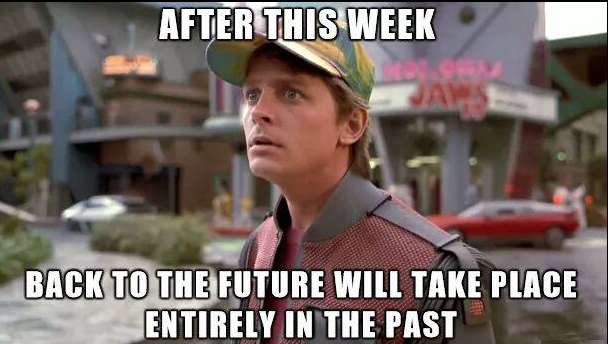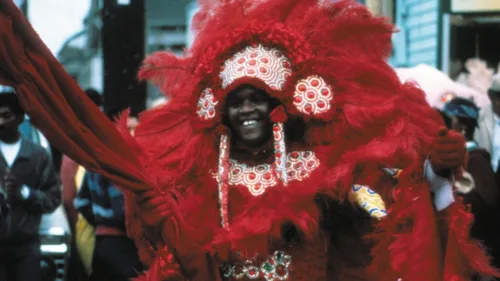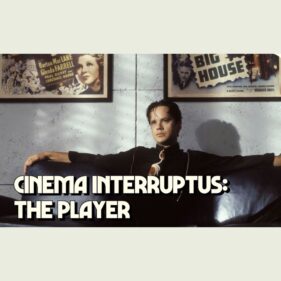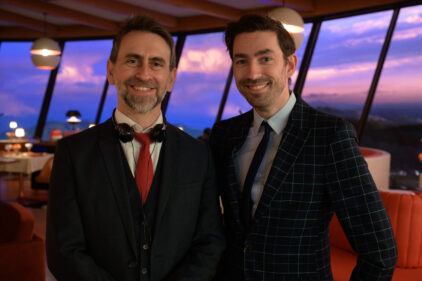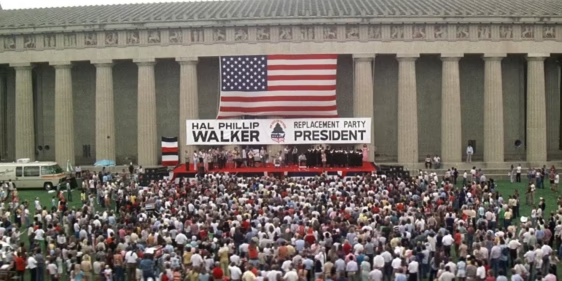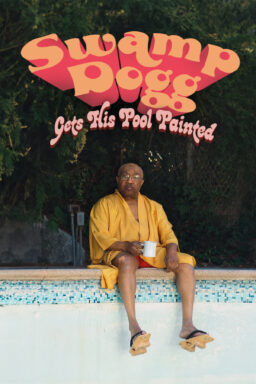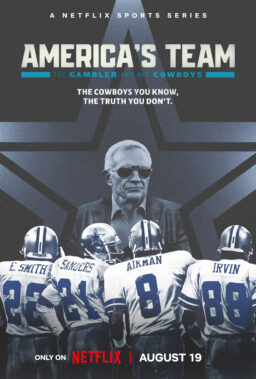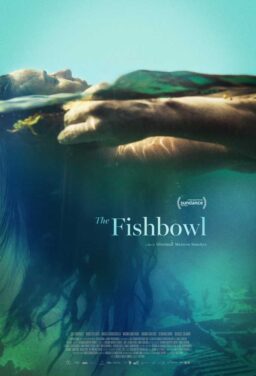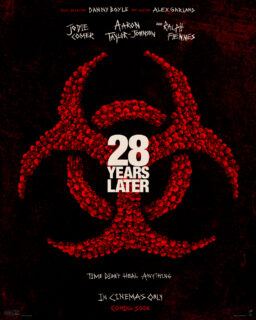I’m not the first person to think of this, and I can’t put it any more succinctly than the meme reproduced above, so I’ll just quote it: “After this week, ‘Back to the Future’ will take place entirely in the past.'” Attention should be paid, because this is a milestone of sorts. We’ve collectively lived with this trilogy for 25 years now, and on some level we knew the day would come when the series would be entirely past-tense. And here we are.
What a trip!
This durable trilogy by Robert Zemeckis and his then co-screenwriter Bob Gale started out in 1985 looking backwards, to 1955. Lovable teen hero Marty McFly time-warped back thirty years, to 1955, to escape terrorists who were trying to kill his mentor, Doc, and steal the uranium that powered Doc’s time-traveling DeLorean, and…OK, you’ve seen it; the important part is, when audiences first saw this movie in 1985, they were seeing the 1955 sequences not as any sort of historical representation, but rather as a political or moral one. The fifties were seen from the relatively smug middle-class American vantage point of the “present,” 1985.
If you are old enough to have seen the film in theaters, you heard the same kind of derisive laughter during the Eisenhower sequences that you hear during repertory screenings of 1950s films today (indeed any era not our own): “Ha ha ha, look at the clothes and the hair on those characters! Those 1950s people were so primitive and silly-looking in their grooming and fashion choices—not at all like us, we highly evolved people who are perfect and whose appearance will never seem ridiculous!” Zemeckis and Gale and executive producer Steven Spielberg and a lot of the key people involved with the film were Baby Boomers who were kids or teenagers in the 1950s. This probably explains why the 1955 sequences in the first movie seem delighted by the possibility that teenage girls might have had sexual feelings during the era of poodle skirts and saddle shoes (Boomer storytellers getting a naughty charge from imagining their own ’50s moms being horny). And perhaps it also explains why the film seems so aghast at the despair of the middle-class striver, exemplified by Marty’s then-teenage future parents in the ’80s sequences. The archetype wasn’t born in the 1950s, but it gained currency in the sixties and seventies, when the directors of blockbuster ’80s films were going to college or reading Rolling Stone.
Then came the first of two sequels, “Back to the Future II,” the only entry in the series to envision a period that hadn’t already existed. The story sent Marty forward in time to 2015 (October 21, to be exact) to solve the problem with his kids that Doc warned the hero about in the original’s unabashedly sequel-teasing denouement. Like all science fiction to one degree or another, the first visit to circa-2015 Hill Valley is not any kind of serious speculation on the future, it’s a 1985 vision of what could lay ahead if trends in American life and culture marched on unimpeded. A 3D, computer-generated shark advertising “Jaws 19” pops out of the roof of the diner and mock-bites Marty’s head off (he complains that the shark “still looks fake,” a fun dig at Zemeckis’ colleague and rival, Spielberg); there are hover boards; everybody wears their pockets inside-out; there are virtual reality headsets and something like Facetime; the Chicago Cubs finally win the World Series.
Some of these predictions came true and some didn’t, but I’m not sure it matters what the future scenes got “right” or “wrong.” What matters is that tone and pace and values of this future world seemed like an extrapolation of the nascent high-tech wave and unabashedly materialistic mindset of the Reagan ’80s (which had only officially ended a few months earlier, with Reagan’s vice president, George H.W. Bush, being sworn in). None of this was obvious in 1989, but it’s obvious now. When Biff becomes the horrible gangster boss of Hill Valley in an alternate 1985 (thanks to future Biff stealing Doc’s DeLorean and…yeah, yeah, you’ve seen it), the present becomes a Hobbesean dystopia in which Marty’s dad is dead and Biff is married to Marty’s mom (which makes Marty, whose time-jumps allowed this horrible scenario to happen, a sort of Oedipus-by-proxy). It’s a laissez faire nightmare, a grim fantasy mirror of America’s panic over crack cocaine in the ’80s, a drug that politicians insisted was going to make every major city a husk unless the country built three times as many prisons and instituted mandatory minimums and so forth. The economy seems based around burglary and gambling. These scenes are a half-step up from the sort of rotting urban future-world that would be presented in Frank Miller’s hard-boiled comics. You wouldn’t be surprised to see a sewer mutant pop up through a manhole cover and snap at Marty’s ankles.
So all of these scenes, present and “future,” are about the eighties, really. So too, in their way, are the 1885 scenes in “Back the Future III”—well, that and classic Western adventure movies like “Rio Bravo” and “Stagecoach,” which Zemeckis (and Spielberg, and pretty much every white male Boomer who attended film school in the ’60s or ’70s) adored, not without reason. Mixed into all of the 19th century stuff is a sweet romance (between Doc and a schoolteacher played by Mary Steenburgen) and some surprisingly poignant images of Hill Valley back before it was developed; we even see the clock tower under construction. The roads that Doc tells Marty they won’t need in the future, thanks to anti-gravity technology, are dusty horse trails or railroad tracks.
The second movie doesn’t have the emotional pull of the first, though it does have a powerful, at times overbearing physicality (akin to what Zemeckis pulled off in his previous feature, 1988’s “Who Framed Roger Rabbit“); the third film isn’t as tense and occasionally frightening as the second, but it reclaims a bit of the original’s charm and warmth, and unlike “II”, it mostly manages to be amusing without being cruel and obnoxious. (Biff is funny sometimes, but he’s always dumb and hateful, and grating if allowed to remain onscreen for more than a few minutes at a stretch.)
Still, when you look at all three “Future” movies together, you can’t help but admire their clockwork symmetry—the scenes rhyming with other scenes, the gags rhyming with other gags (there are three confrontations in three diners followed by three chases around the town square). More than a few of these feel like knowing jokes about what it means to make a sequel to a hit movie: how to give people something that’s the same, but different. This notion is most ingeniously explored in the climax to “II”, which inserts alternate versions of Marty and Biff into the school dance that ended the original.
What strikes me about this trilogy now, during the final week of the final year of the saga’s Hill Valley narrative, is the way the individual movies, unlike their characters and town, have improbably escaped the ravages of time.
Once we got about twenty years out from the first film, their 1985 scenes became “period,” too, like the 1955 scenes. I showed the trilogy to my son and daughter not too long ago, and they laughed as hard at Marty’s once-hip ski vest and feathered hair as audiences during my era laughed at the 1950s signifiers. My daughter, who is a lot older than my son and is studying film history and sociology in college now, was intrigued to see how a trilogy conceived and filmed in the ’80s viewed life in the ’50s, and what it said about 1980s life without meaning to.
The sense of cultural superiority seemed more palpable to me when I watched the series with my kids than when I watched it during its original run, or when I revisited it in the ’90s as a college film student. I was 16 when the original “Future” came out. The eighties were my adolescent decade. Few teenagers have the self-awareness and humility to recognize that the time they live in is not, in fact, the most technologically and culturally advanced time that the human race will ever experience, and that snickering at the past (as depicted in movies or history texts) makes the laughing person seem clueless and arrogant; I was no exception. I’m humbler about that sort of thing now because I’m in my forties and seen a few decades turn over. When I watch the “Future” films today, I am not just watching the films, I am watching myself—or I should say, I am thinking about who I was when the films came out, and cringing a little bit at how much I thought I knew, and how much I didn’t know that I didn’t know. When I was in high school, I laughed during the diner scene (along with everyone else in the theater) because Marty ordered a Pepsi Free and the counterman thought he was demanding a Pepsi for free. Now I laugh because the Pepsi Free name was discontinued in 1987, two years after the first “Future” came out. The joke is not about the obliviousness of the ’50s adult, it’s about the arrogance of the ’80s teenager.
Likewise, the spiky glibness of Zemeckis and Gale’s vision has been sanded away by time. These are different films now, far more interesting than they were on first release, in ways their makers never could have anticipated. If anybody wants to know how America saw itself in the eighties, the “Future” films are an unbeatable way to answer the question. They don’t just show you what Hollywood thought America (at least white suburban/small town America) was about in 1985, they show you what Hollywood thought the fifties and the 1880s were about, and what the future would bring. The trilogy’s ongoing obsessions with money, success, achievement, inheritance, civic development and high-tech-gimmicks are themselves very eighties—so eighties that as I type this, suddenly I’m wearing loafers with no socks, and I don’t even own a pair of loafers. The passage of time makes the whole trilogy seem wise and humble, in ways it never
could seem in the eighties or nineties or aughts, because the entire
thing is really and truly a time capsule—not of any temporal-physical reality, but of a particular strain of American cultural
posturing circa 1985-1990.
All movies, particularly time-travel movies, have a touch of this. But the “Future” films are different because, unlike the vast majority of time travel stories, they are anchored very strongly in the “present.” The present is not merely a framing device or a launching pad for adventures, as is the case in most time travel films. All visits to the past or
future are related to the present — and the stakes are not just
personal (Marty’s existence, his parents’ happiness), they are cultural. Marty doesn’t just change his family, he
changes the town, and by implication, American life. This is different
from, say, time travel as presented in the Terminator movies or “The Time
Machine,” which have no interest in the subtleties of such things because they have a larger issue in their minds: the survival of the species. Most time travel movies don’t have the conceptual reach of this trilogy. That’s why they feel more relevant to daily life today, twenty-five years away from the final film’s release, than the Terminator series does.
When we watch the “Future” films now, we step into a time machine of a different sort. There is no future anymore. There is only “back.” And the series is not about the characters alone. It’s about you in relation to the series. The implications of that are deep, and they feel built-in to the concept of the trilogy, not incidental.
If by some chance Zemeckis and Gale are reading this and feeling in any way bummed out about the films being past tense, I hope they’ll look on the bright side: if you watch the trilogy through the lens of pop culture history, nothing in it will ever seem dated. All three films have become records of how Americans imagined the past, present and future in the eighties. Of course the shifting dynamic applies to all movies, but the “Future” films put it right out there like a Calvin Klein underwear label or a logo on a can of Pepsi Free, where everyone can study it, laugh at it, and think about it.

